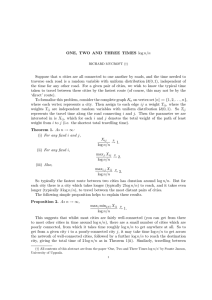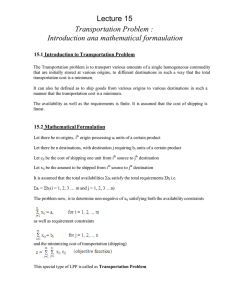Document 13449628
advertisement
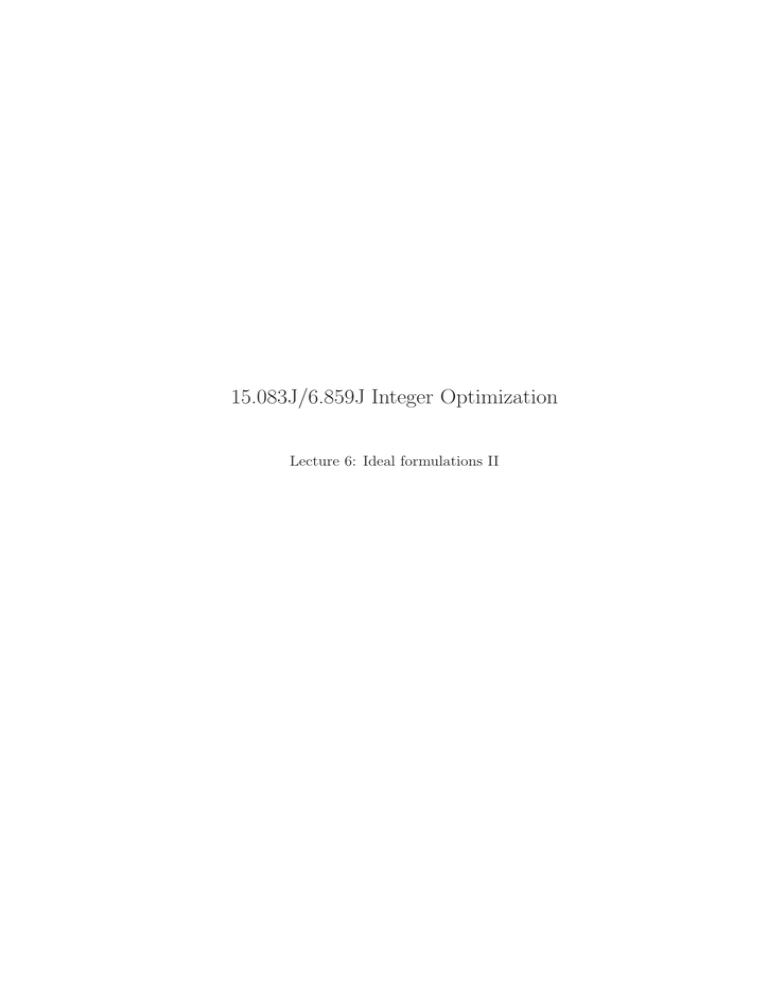
15.083J/6.859J Integer Optimization
Lecture 6: Ideal formulations II
1
Outline
Slide 1
• Randomized rounding methods
2
Randomized rounding
Slide 2
• Solve c x subject to x ∈ P for arbitrary c.
• x∗ be optimal solution.
• From x∗ create a new random integer solution x, feasible in P : E[c x] = ZLP = c x∗ .
• ZLP ≤ ZIP ≤ E[ZH ] = ZLP .
• Hence, P integral.
2.1
Minimum s − t cut
minimize
Slide 3
cuv xuv
{u,v}∈E
subject to xuv ≥ yu − yv ,
{u, v} ∈ E,
xuv ≥ yv − yu ,
ys = 1,
{u, v} ∈ E,
yt = 0,
yu , xuv ∈ {0, 1}.
2.1.1
Algorithm
• Solve linear relaxation. Position the nodes in the interval (0, 1) according
to the value of yu∗ .
Slide 4
• Generate a random variable U uniformly in the interval [0, 1].
• Round all nodes u with yu∗ ≤ U to yu = 0, and all nodes u with yu∗ > U to yu = 1. Set xuv = |yu − yv | for all {u, v} ∈ E.
2.2
Theorem
Slide 5
For every nonnegative cost vector c,
E[ZH ] = ZIP = ZLP .
1
U
yv is rounded to 1
yu is rounded to 0
yt∗
yu∗
yv∗
⎡
Proof:
ZIP ≤ E[ZH ] = E ⎣
ys∗
⎤
cuv xuv ⎦
{u,v}∈E
=
cuv P min
yu∗ , yv∗
≤ U < max
yu∗ , yv∗
{u,v}∈E
=
cuv |yu∗ − yv∗ |
{u,v}∈E
= ZLP ≤ ZIP
2.3
Stable matching
• n men {m1 , . . . , mn } and n women {w1 , . . . , wn }, with each person having
a list of strict preference order.
Slide 6
• Find a stable perfect matching M of the men to women:
• There does not exist a man m and a woman w who are not matched under
M , but prefer each other to their assigned mates under M .
2.3.1
Formulation
• w1 >m w2 if man m prefers w1 to w2 .
• m1 >w m2 if woman w prefers m1 to m2 .
• Decision variables
xij =
1,
if mi is matched to wj ,
0,
otherwise.
2
Slide 7
• N = {1, . . . , n}
n
xij = 1,
i ∈ N,
xij = 1,
j ∈ N,
j=1
n
i=1
xij ∈ {0, 1},
xij +
xik +
{k|wk <mi wj }
2.3.2
xkj ≤ 1,
i, j ∈ N.
{k|mk <wj mi }
Proposition
Slide 8
x ∈ PSM . If xij > 0, then
xij +
xik +
{k|wk <mi wj }
2.3.3
i, j ∈ N,
xkj = 1.
{k|mk <wj mi }
Proof
n
n
min
Slide 9
xij
i=1 j=1
x ∈ PSM
s.t.
Dual
n
max
αi +
i=1
n
j=1
αi + βj −
s.t.
n
n
βj −
γij
i=1 j=1
γik −
{k|wk >mi wj }
γkj ≤ 1,
i, j ∈ N,
{k|mk >wj mi }
γij ≥ 0.
x ∈ PSM . Set
αi =
n
n
γij , βj =
j=1
• Dual:
γij +
γij and γij = xij for all i, j ∈ N.
i=1
γik +
{k|wk <mi wj }
γkj ≤ 1,
∀ i, j ∈ N,
{k|mk <wj mi }
feasible if γij = xij and x ∈ PSM .
• Objective
n
i=1
αi +
n
j=1
βj −
n
n
i=1 j=1
γij =
n
n
xij .
i=1 j=1
• Complementary slackness of optimal primal and dual solutions.
3
0
1
mi
11
00
1x1
0
0
ik
0xij
1
1
0
{k|wk <mi wj }
xkj
{k|mk >wj mi }
wj
2.4
1
0
0
1 1
0
Key Theorem
Slide 10
PSM = conv(S).
2.4.1
Randomization
• Generate a random number U uniformly in [0,1].
Slide 11
• Match mi to wj if xij > 0 and in the row corresponding to mi , U lies in
the interval spanned by xij in [0, 1]. Accordingly, match wj to mi if in the
row corresponding to wj , U lies in the interval spanned by xij in [0, 1].
• Key property: xij > 0, then the intervals spanned by xij in rows corre­
sponding to mi and wj coincide in [0, 1].
Slide 12
• The matching is stable: wk who is preferred by mi to his mate wj under the as­
signment, i.e., the interval spanned by xik is on the right of the interval spanned
by xij in the row corresponding to mi , is assigned a mate whom she strictly
prefers to mi , since in the row corresponding to wk the random number U lies
strictly to the left of the interval xik .
• xU
ij = 1 if mi and wj are matched.
E[xU
ij ] = P(U lies in the interval spanned by xij ) = xij .
1
u
• xij = 0 xij
du: x can be written as a convex combination of stable matchings
u
x as u varies over the interval [0, 1].
4
MIT OpenCourseWare
http://ocw.mit.edu
15.083J / 6.859J Integer Programming and Combinatorial Optimization
Fall 2009
For information about citing these materials or our Terms of Use, visit: http://ocw.mit.edu/terms.
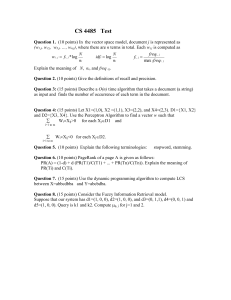

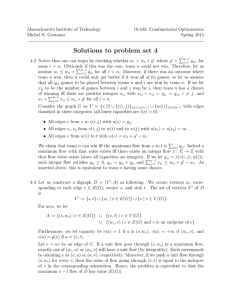
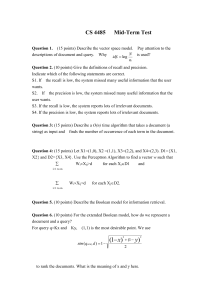
![[Supplementary Material]](http://s2.studylib.net/store/data/011896055_1-250f937372b326a1097e3beabf58960f-300x300.png)
